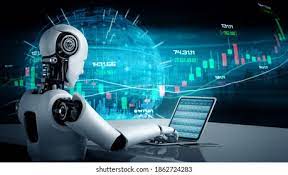In the fast-paced world of foreign exchange (forex robot) trading, every second counts. Traders constantly seek an edge to maximize profits and minimize risks. This quest for efficiency has led to the rise of forex robots, automated trading software that promises to revolutionize how we trade currencies. In this article, we’ll explore the world of forex robots, their benefits, drawbacks, and how they are shaping the future of forex trading.
What are Forex Robots?
Forex robots, also known as expert advisors (EAs), are software programs designed to analyze the forex market and execute trades automatically on behalf of traders. These robots use predefined trading strategies and algorithms to identify trading opportunities and make decisions without human intervention. Traders can customize these robots to suit their trading preferences and risk tolerance.
How Do Forex Robots Work?
Forex robots work by analyzing market conditions, such as price movements, volume, and other indicators, to identify potential trading opportunities. Based on predefined rules and algorithms, these robots can execute buy or sell orders on behalf of traders. Some robots are designed to trade frequently, while others take a more conservative approach, trading only under specific conditions.
Benefits of Forex Robots
- Automation: Forex robots can execute trades automatically, freeing traders from the need to monitor the market constantly. This automation can help traders take advantage of opportunities even when they are not actively trading.
- Speed: Forex robots can execute trades much faster than humans, enabling traders to capitalize on market movements instantly.
- Emotion-Free Trading: Unlike human traders, forex robots are not affected by emotions such as fear or greed, which can often cloud judgment and lead to poor trading decisions.
- Backtesting: Traders can backtest forex robots using historical data to evaluate their performance and fine-tune their strategies before deploying them in live trading.
Drawbacks of Forex Robots
- Lack of Flexibility: Forex robots operate based on predefined rules and algorithms, which can limit their ability to adapt to changing market conditions.
- Over-Optimization: Traders may be tempted to over-optimize their forex robots based on past data, which can lead to poor performance in live trading.
- Technical Issues: Forex robots can encounter technical issues, such as connectivity problems or software glitches, which can disrupt trading operations.
The Future of Forex Trading
Forex robots are becoming increasingly sophisticated, thanks to advancements in technology such as artificial intelligence and machine learning. These technologies are enabling forex robots to learn from past trades and continuously improve their performance. As a result, we can expect to see more traders embracing automation in their trading strategies.
In conclusion, forex robots are reshaping the way we trade currencies, offering benefits such as automation, speed, and emotion-free trading. However, traders should be aware of the drawbacks, such as lack of flexibility and technical issues, and use forex robots wisely as part of a well-rounded trading strategy. As technology continues to evolve, forex robots will likely play an even more significant role in the future of forex trading.

